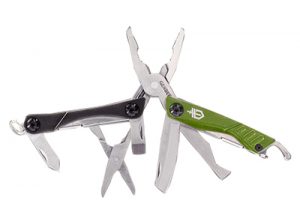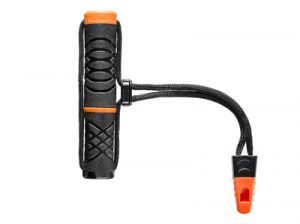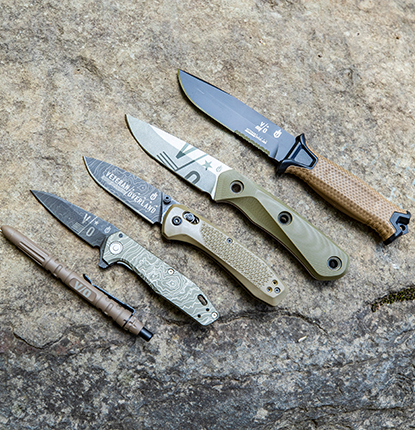At Gerber, we’re big fans of taking a good walk out in the woods. A hike is a great way to slow down, experience nature, and see some of the world’s greatest beauty. One of the keys to having a great time out there is having the right things on hand so you’re prepared for any situation.
All it takes is a wrong turn, a slip and fall, or some bad weather to turn a great hike into a serious situation. That’s why we like to take the stance of being overprepared. It’s better to have everything you need and not use it than the opposite.
It doesn’t matter if you’re about to head out on a flat, 3-mile loop or a double-digit high elevation all-day leg buster. All hikers of all experiences should head out on the trail with the necessary gear for hiking safely.
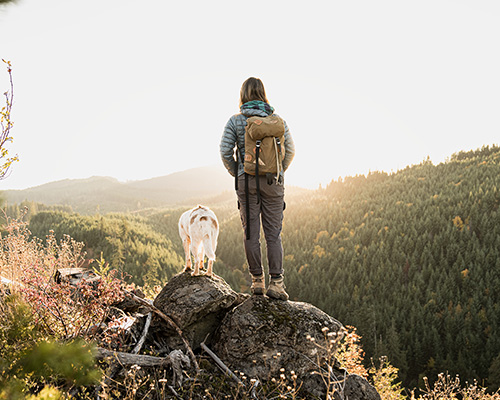
We’ve put together this list of must-have hiking gear.
10 essentials for a hike
- Navigation
- First-Aid Kit
- A Knife Or Multi-Tool
- Protection From The Elements
- Rescue Aid
- Extra food And water
- Headlamps And Flashlights
- Firestarter
- Extra Layers
- A Good Pack
Small basics
Before we dive deeper into those essentials, we want to cover our bases and talk about a few basics you need to have on a hike. First and foremost, please make sure you have the right shoes. You can wear hiking boots, trail runners, or even tennis shoes. It all depends on your hike and what you’re doing. That’s a decision that’ll require your own research.
It should go without saying, but always bring food and water on a hike. You’d be surprised how many people need to bring more water or food when they hike. Bring enough, and bring more than enough on your hike.
Lastly, it may seem easy to do at the last minute, but plan everything you can about your hike. Read the trip reports online if they’re available, look at the weather forecasts, and read all the information about the trail.
Navigation
One of the most critical things on a hike is to know where you’re going. There are many tools you can use to navigate. Having a compass and trail map is your most basic way of doing it. Orienteering is its own art form, so ensure you know how to read the map and use the compass correctly.
You can also use a GPS device. Not only will it show you where you are on the map and trail in real-time, but many can contact emergency services with your location when your phone is out of service.
There are a few apps that use GPS instead of cellular data that can be helpful for navigation. However, they tend to use a lot of battery life when you’re using them, so plan accordingly, and above all, always stay on the trail.
First-Aid Kit
A fall, bump, bruise, or cut could happen at any time on a hike. You’d be wise to have a first aid kit on hand. From a small scrape to something more serious, you don’t want to hike miles back to your car without treating the injury. Most outdoor gear shops will have a portable first aid kit you can fit right in your pack with all your other gear.
A Knife or Multi-tool
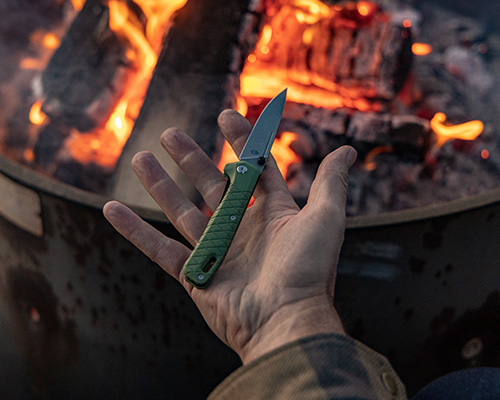
At Gerber, we always recommend having a blade on hand. Whether it’s an emergency or you just want to cut into salami packaging for a snack, a good knife or multi-tool is a versatile tool on the trail.
The Zilch is a lightweight pocketknife that can handle a lot of outdoor needs. It’s light and can clip to your pocket or tie down to your pack with lanyard holes.
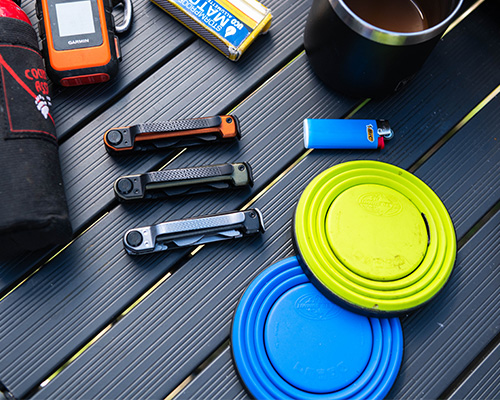
A small multi-tool like the Gerber Dime is great for a hike because it’s small, light, and packs away. If you want to be extra prepared, the Armbar Scout has 7 essential tools you can use in many situations.
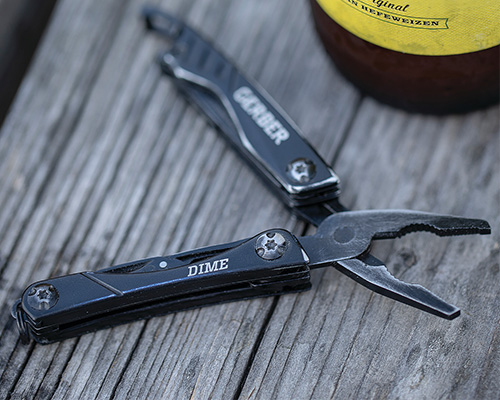
Protection From The Elements
It’s no secret, the outdoors is outside, so you’ll need to protect yourself from the harsh elements. This may be a bit broad, but if you research, you can select the items you’ll need. A general rule of thumb would be these items: A hat, sunglasses, sunscreen, bug spray, and a rain jacket.
Rescue Aid
If you find yourself in need of help, you’ll need a way to notify others. Many backpackers, skiers, and hikers carry a whistle they can blow repeatedly to catch the attention of someone nearby.
If you’re even more remote or need a more serious rescue, a personal locator beacon or satellite messenger can help you contact emergency services quickly.
Extra Food And Water
As mentioned earlier, always pack food and water for a hike. The hike may take longer than expected, or you may find yourself in an emergency that has you staying out much longer than anticipated. Packing more than you need is a safe and helpful way to ensure you can stay safe.
Headlamps And Flashlights
Some folks love a sunrise hike; sometimes, the hike takes so long it becomes a sunset hike. Packing a headlamp or flashlight will help you follow the trail back home when it becomes too dark and you’re at risk of getting lost.
Firestarter
Let’s say the worst happens, and you’re caught out in the wilderness overnight. Understanding how to build a fire safely is extremely helpful in any emergency or survival situation. Not only can it keep you warm, but a fire is known to help keep you calm and bring a sense of safety.
The Gerber Fire Starter is a reliable Ferro rod that can spark a flame in any situation. Keep it in your pack for moments like this.
Extra Layers
In some areas, the weather can change on a dime. Temps can drop fast when the sun goes down or a front rolls in. Having an extra layer is always worth it in the end.
A Good Backpack
A good hiking backpack can make a world of difference on the trail. From small day packs to bigger packs, consult with a local gear shop to find the right one that fits you and can comfortably carry everything you need on your hike.






